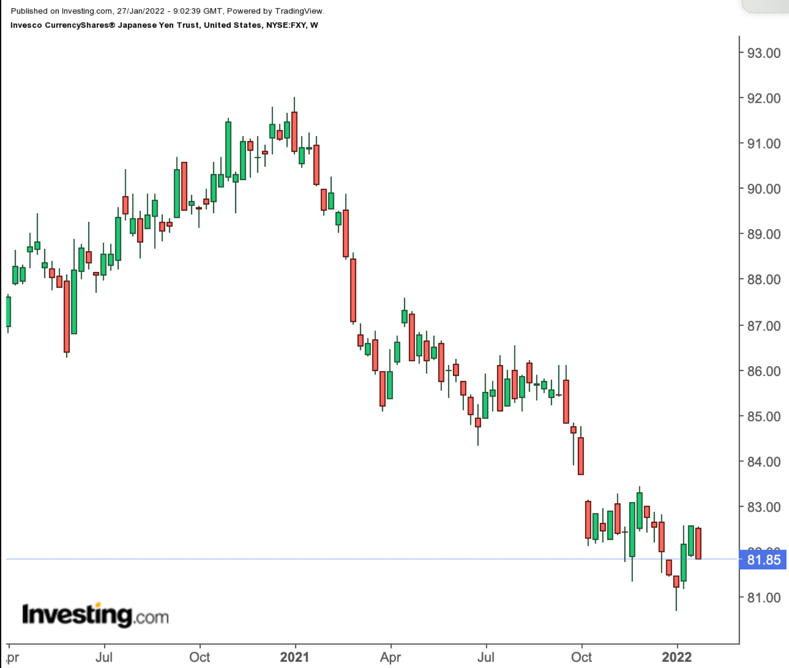Bitcoin price today: dips to $92k as Fed cut doubts spark risk-off mood
Investors looking for exposure to the foreign exchange (forex) market are increasingly researching currency exchange-traded funds (CETFs). As regular brokerage accounts can access these ETFs, retail investors do not need to trade derivative products like swaps, forwards, futures, or options.
The Bank for International Settlements (BIS) indicates that the daily trading volume in global FX markets exceeds $6 trillion. Over 90% of those transactions are among institutions. In other words, retail clients contribute less than 10% of the total volume in FX markets.
We recently covered two non-US stocks ETFs that appeal to investors looking to geographically diversify their portfolios in light of recent Wall Street weakness. Similarly, currency ETFs are valuable instruments for portfolio diversification, hedging, or even speculation.
Yet, currency funds currently account for a small fraction of the ETF universe as fewer than two dozen currency funds are listed in the US. With that information, here’s one that deserves readers’ attention.
Invesco CurrencyShares Japanese Yen Trust
- Current Price: $81.85
- 52-Week Range: $80.67 - $91.13
- Expense Ratio: 0.40% per year
Our first fund, the Invesco CurrencyShares® Japanese Yen Trust (NYSE:FXY), tracks the price performance of the Japanese yen against the US dollar. This CETF is appropriate for yen bulls. The fund was launched in 2007, while net assets currently stand at $197.6 million.
The exchange rate between the dollar and the yen reflects the number of yens for 1 US dollar. As we write, USD/JPY stands at around 114.17.
Those who follow FX markets know that the yen is widely traded globally. The Japanese currency is mainly seen as a haven and used primarily to hedge against a potential decline in global equity prices.
A strong yen typically implies risk aversion worldwide. Hence, investors expecting weakness in the global economy might use FXY to hedge their equity holdings.
Over the past 12 months, FXY has declined by 10.1%. The ETF hit a multi-year high in January 2021 and a 52-week low at the start of 2022.
A strong USD during the second half of 2021 and the anticipated increase in interest rates in the US have pushed FXY down (or the USD/JPY exchange rate to the upside).
Yet, since the start of the new year, FXY has returned about 2.5%. Meanwhile, broader US indices have come under pressure. For example, the S&P 500 index is down around 8.8% in January.
Many currency traders would argue that moves in yen mainly depend on what happens in the US and not necessarily in Japan. The coming months could likely see a battle between yen bulls and bears. On the one hand of the equation are those who expect FXY to appreciate further, especially if the volatility in global equities continues.
Those yen bulls could consider buying FXY around current levels. We’re also of the camp that JPY could strengthen further, given uncertainties regarding global growth and policy actions of central banks in the short run.
Short-term yen bulls could also consider a leveraged CETF, such as the ProShares Ultra Yen (NYSE:YCL). This fund seeks two times (2x) daily investment performance of the price of the yen versus the US dollar. But as we regularly discuss, leveraged or inverse funds are not suitable for most long-term retail traders.
Meanwhile, other investors might expect FXY to slide further as the hawkish Fed raises rates. Such a move could provide tailwinds to the US dollar.
Then, those yen bears could potentially use a leveraged and inverse ETF, namely the ProShares UltraShort Yen (NYSE:YCS). As the name suggests, this CETF seeks to achieve daily returns that equal two times the inverse (-2x) of the yen’s performance versus the greenback. But we should once again note that those who hold leveraged ETFs for longer than a day may expose themselves to substantial risk.
It is impossible to know how USD/JPY might move in the coming weeks. However, we can expect current wild swings in equities to translate into sizeable potential moves in yen against the dollar as well.
